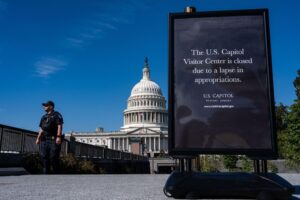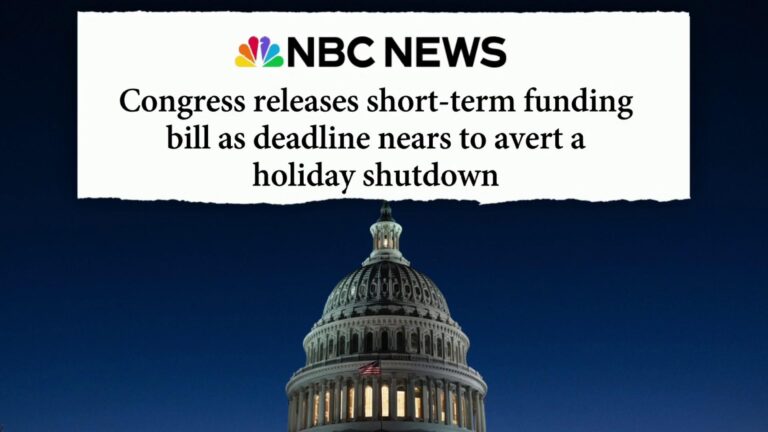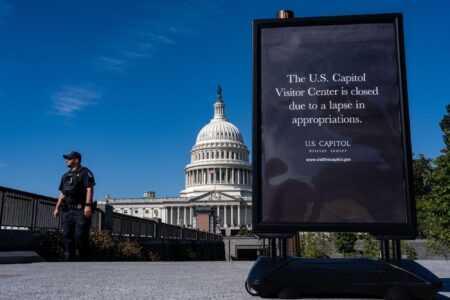House Passes Vital Funding Legislation to Avert Government Shutdown
In a decisive effort to prevent a federal government shutdown, the House of Representatives has approved a comprehensive appropriations bill designed to sustain uninterrupted government functions. This bipartisan-supported legislation allocates essential funding to numerous federal agencies and programs for the upcoming fiscal year. The bill prioritizes increased investments in national defense, public health, and infrastructure development, aiming to address pressing national priorities while maintaining fiscal discipline.
Key allocations within the bill include:
- $750 billion dedicated to defense and homeland security enhancements
- $180 billion earmarked for healthcare initiatives, including pandemic readiness
- $120 billion allocated for transportation infrastructure upgrades
- Measures to promote fiscal responsibility and reduce the federal deficit
Following House approval, the bill has been forwarded to the Senate, where leaders have expressed confidence in a prompt review and passage. Lawmakers emphasize the critical need to avoid interruptions in government services that affect millions of Americans daily, highlighting the bill’s role in ensuring operational stability.
| Sector | Funding Amount (in billions) | Objective |
|---|---|---|
| Defense and Homeland Security | $750 | Strengthening military capabilities and cybersecurity infrastructure |
| Healthcare | $180 | Supporting hospitals and enhancing pandemic response efforts |
| Infrastructure | $120 | Upgrading roads, bridges, and public transit systems |
Detailed Budget Breakdown and Priorities in the New Spending Bill
The recently passed spending package outlines significant funding allocations aimed at sustaining essential government functions throughout the next fiscal cycle. Notably, the bill reinforces support for national defense and veterans’ healthcare, reflecting a shared commitment across party lines to uphold military readiness and servicemember welfare. Additionally, the legislation channels increased resources to public health agencies, including the Centers for Disease Control and Prevention (CDC), to bolster preparedness against future health crises.
Additional highlights include:
- Education: Expanded grants for K-12 and higher education institutions aimed at infrastructure improvements and alleviating student debt burdens.
- Environmental and Energy Initiatives: Investments in renewable energy projects and programs designed to enhance climate resilience.
- Infrastructure Modernization: Funds dedicated to revitalizing transportation networks and repairing aging bridges and highways.
- Technology Advancement: Support for expanding broadband access and strengthening cybersecurity defenses.
| Category | Budget Allocation (Billion $) | Primary Focus |
|---|---|---|
| Defense & Veterans Affairs | 750 | Military preparedness and veteran healthcare |
| Health & Human Services | 120 | CDC funding and pandemic readiness |
| Education | 90 | Grants and facility upgrades |
| Infrastructure & Clean Energy | 150 | Transportation improvements and renewable energy projects |
Senate Review Process and Anticipated Timeline for Approval
The Senate is poised to review the funding bill promptly, with leadership underscoring the urgency of preventing a government shutdown. While bipartisan cooperation is expected, some senators have voiced concerns regarding specific funding levels, particularly in defense and social welfare programs. The Senate Majority Leader is coordinating a schedule that includes committee evaluations and floor debates to facilitate a timely decision.
Factors shaping the Senate’s deliberations include:
- Concerns from senators about defense spending and social program allocations
- Potential amendments proposed by moderate and progressive members
- Upcoming federal deadlines that could impact agency operations if funding is delayed
| Stage | Projected Timeline | Activity |
|---|---|---|
| Bill Introduction | Day 1 | Referral to Senate Appropriations Committee |
| Committee Review | Days 2-3 | Debate and consideration of amendments |
| Floor Debate | Day 4 | Senate discussion and voting on proposed changes |
| Final Vote | Day 5 | Full Senate vote on the funding legislation |
Effects on Federal Agencies and Strategic Advice for Stakeholders
Federal agencies are now tasked with managing operations under the constraints of this temporary funding measure, which forestalls a shutdown but leaves some programs in fiscal limbo. Agency leaders are encouraged to focus on essential services and defer non-critical projects until a more permanent budget solution is enacted. Maintaining open communication with stakeholders and the public is vital to ensure transparency and minimize operational disruptions.
Strategic recommendations for stakeholders include:
- Maintain active engagement with agency representatives to assess how funding limitations may affect ongoing initiatives
- Closely follow congressional developments, as Senate actions will influence the stability of the current funding arrangement
- Develop contingency plans to adjust project timelines and resource allocations in response to potential funding changes
| Stakeholder Group | Recommended Action | Anticipated Outcome |
|---|---|---|
| Federal Agencies | Implement spending restrictions on non-essential programs | Reduced risk of operational interruptions |
| Government Contractors | Review contracts for funding contingencies and adjust plans accordingly | Enhanced financial stability and planning accuracy |
| Advocacy Organizations | Engage with legislators to support sustained program funding | Increased influence on policy decisions |
Conclusion
With the House’s passage of the funding bill to prevent a government shutdown, the focus now turns to the Senate, where lawmakers will finalize the legislation’s fate. The Senate’s prompt and decisive action is essential to guarantee continued government funding and avoid interruptions to critical public services. Ongoing coverage will track these developments as the legislative process advances.







